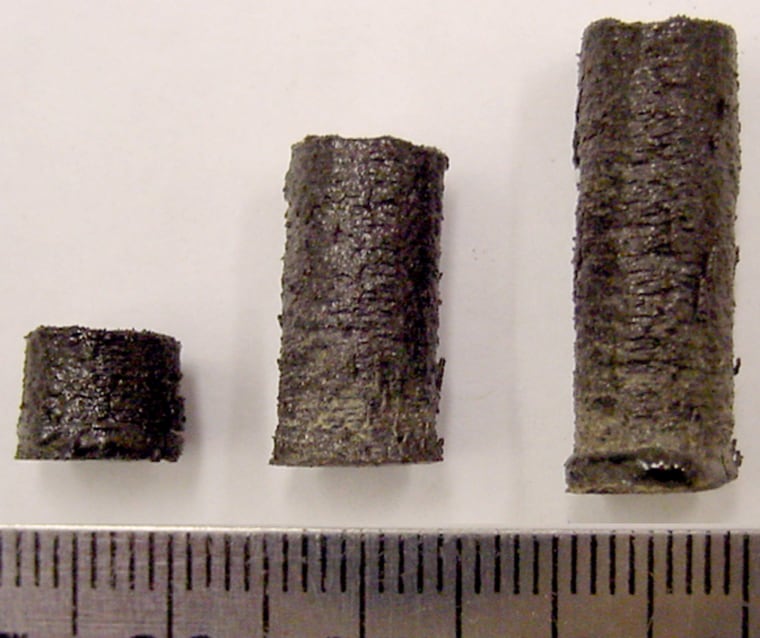
When lunar colonists need a new tool or replacement part to fix a broken spacecraft leg, all they’ll need to do is scoop up some moon rocks and feed them into a 3-D printer, suggests a new proof-of-concept study.
The ability to use material already on the moon to build things and fix equipment could save earthlings a bundle of money in fuel costs since they won’t have to haul everything they need to their lunar outposts.
To see if this was actually possible, NASA supplied 3-D-printer pioneers Amit Bandyopadhyay and colleagues at Washington State University with 10 pounds of simulated regolith, which is imitation moon rock.
The team fed the material to their 3-D printer, which is a high-tech machine that uses computer aided design models to print out objects in three dimensions, building them layer by layer. They were able to melt the moon material and print basic cylinder shapes with it. You can check it out in the video below.
“The other option is we can actually weld a joint using local material,” Bandyopadhyay told NBC News. This could come in handy, for example, in repairing highly engineered alloys in a spacecraft, for example.
Going forward, the team aims to examine the properties of the lunar materials to determine the structural integrity of the objects printed.
“You may have a good-looking piece in your hand but good for nothing in terms of properties, or you can print something so that it can be functionally useful,” Bandyopadhyay said.
It may turn out that moon colonists will need to bring some additives from Earth to mix with the moon material in order to build certain items, but the study shows we won’t “have to carry everything from here up there,” he added.
As for when we might actually be going up there and putting our 3-D printers to use, Bandyopadhyay notes that could still be some time in far distant future. Sometimes, though, that’s not the point of science project, he added.
“Sometimes we do things because we enjoy doing it.”
Results were published in Rapid Prototyping Journal.
– via Gizmag
John Roach is a contributing writer for NBC News Digital. To learn more about him, check out his website. For more of our Future of Technology series, watch the featured video below.